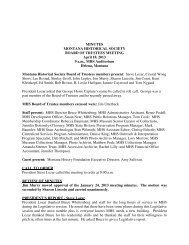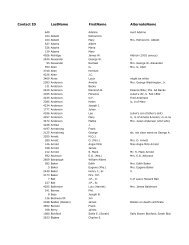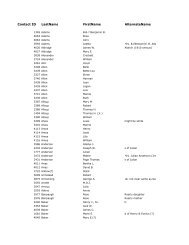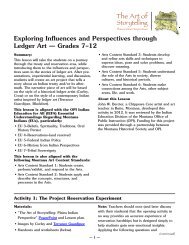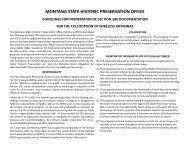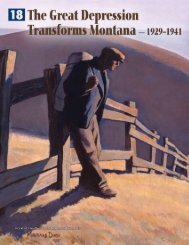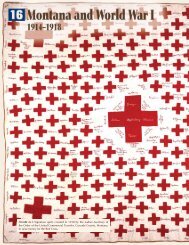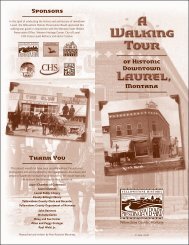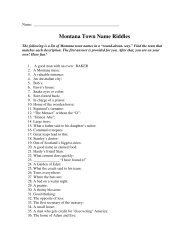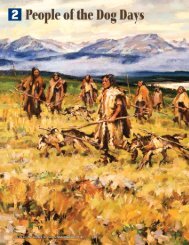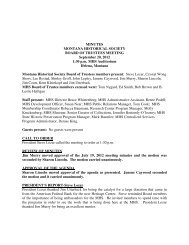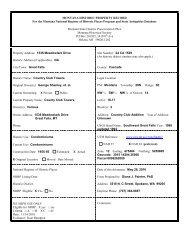Chapter 11 - Montana Historical Society
Chapter 11 - Montana Historical Society
Chapter 11 - Montana Historical Society
You also want an ePaper? Increase the reach of your titles
YUMPU automatically turns print PDFs into web optimized ePapers that Google loves.
“<br />
There were dead horses everywhere.<br />
It was a horrible smell. To add insult<br />
to injury, they came from Billings<br />
with wagons and loaded the bones<br />
of our brothers, the horses, to take<br />
them for fertilizer. They said they<br />
killed 44,000 horses, but it was way<br />
more than that.<br />
”<br />
—JOE MEDICINE CROW, CROW HISTORIAN<br />
FIGURE <strong>11</strong>.13: The relationship between<br />
Plains Indians and their horses ran<br />
deep and strong. Here, John Stands<br />
in Timber Jr., a Northern Cheyenne,<br />
stands with his horse.<br />
2 1 8 P A R T 2 : A C E N T U R Y O F T R A N S F O R M A T I O N<br />
individual Northern Cheyenne ranchers. These<br />
Cheyenne ranchers had established a reputation for<br />
high-quality cattle. When the agent took their cattle,<br />
they lost everything they had worked for.<br />
Agency (reservation headquarters) offi cials<br />
began managing the herd for reservation use. But<br />
they failed to provide winter feed and left the cattle<br />
on the summer grounds through midwinter.<br />
Within a few years there were only 4,000 cattle<br />
left. The reservation agent sold them off, and the<br />
government opened the reservation to grazing for<br />
white cattlemen. The Northern Cheyenne people once again plunged<br />
into poverty.<br />
Dr. Richard Littlebear, a Northern Cheyenne educator and college<br />
president, said his grandfather had been a relatively successful rancher<br />
before 1914. “He owned livestock, had built a house, and was providing<br />
well for his family,” Littlebear said. “After the government took his<br />
livestock away . . . all incentive seemed to desert him. This happened to<br />
many Northern Cheyenne families.”<br />
The pressure by non-Indians to spread onto reservation lands continued.<br />
In 1919 the government ordered the Crow and Northern Cheyenne<br />
tribes to reduce the number of horses on the reservation. The horses ate<br />
grass that white ranchers wanted for their cattle. These ranchers paid the<br />
agents for grazing rights on the reservations.<br />
The government wanted the horses killed because the herds did not<br />
have economic value. The tribes<br />
refused. As historian Joe Medicine<br />
Crow wrote, it “was like ordering<br />
a man to kill his best friend or<br />
brother.”<br />
In 1923 the government contracted<br />
with non-Indian cattlemen<br />
to shoot thousands of horses on<br />
the Crow and Northern Cheyenne<br />
Reservations. “One large outfi t had<br />
to import Texas gunmen to do the<br />
shooting, as local cowboys were<br />
soon disgusted with the slaughter,”<br />
wrote Medicine Crow.<br />
Other Reservation Industries<br />
The Flathead, Crow, and Northern<br />
Cheyenne Reservations all had<br />
timber abundant enough to support<br />
commercial sawmills. At fi rst



